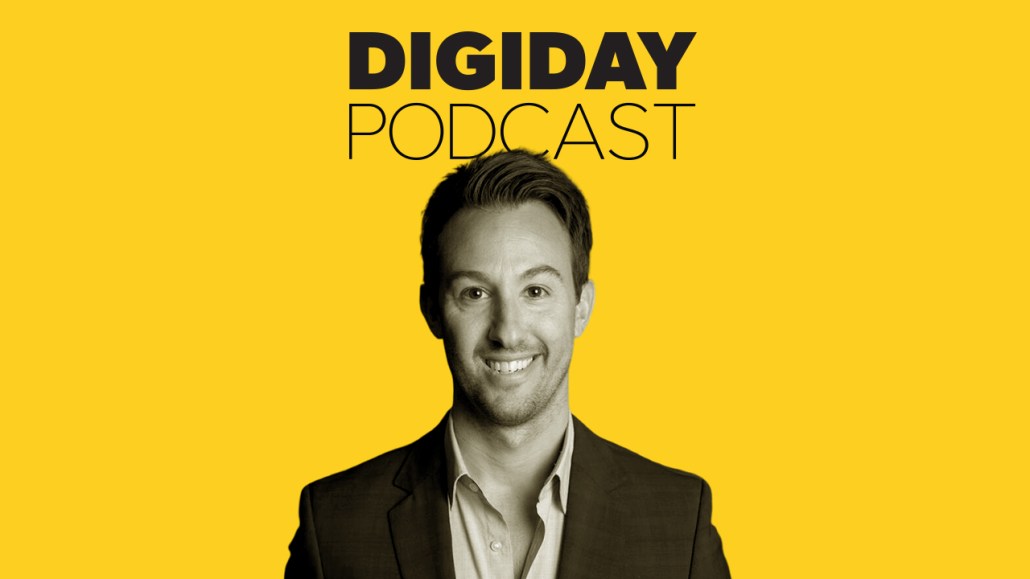USA Today Network’s Michael Kuntz: In this industry, you’re either the consolidator or consolidated

Subscribe: iTunes | Google Play | Stitcher | Anchor
In the era of deep connections with passionate audiences, being in the middle is rough. That’s why USA Today is focused on scale.
“We are taking a more realistic approach,” said the network’s COO, Michael Kuntz on the Digiday Podcast. “There are a lot more people who recognize why they need to support their local news organizations. On the national side, I think there is subscription fatigue. Great journalism cannot all exist behind the paywall. A brand like USA Today has more than enough volume for growing our advertising business. If you’re somewhere in the middle, you’re in a tough spot. You can’t charge for content, but you’re not niche enough that specific audiences will look to support you.”
USA Today makes 75 percent of its advertising revenue from digital advertising and 25 percent from print advertising. On this episode, Kuntz discusses why USA Today won’t pivot to paid in the foreseeable future, the reason for mass layoffs a couple weeks ago, the next step forward and more. Edited highlights below.
Local is hurting but national is thriving.
“The layoffs were on the local side of the business [which] is tied to local print advertising business. As that business shifts and evolves, unfortunately, we’re going to be forced to make tough decisions. On the national side, we’ve made investments in the business from a headcount perspective and the product perspective as well as the business side of the division. From an owned and operated perspective, we’re investing more on the desktop product. Yes, audiences will continue to shift to mobile but it’s not happening as fast as we thought so it’s the right time for us to start investing in desktop. Aside from the aesthetics itself, we want to ensure that we rely on data to inform decisions around personalization and trying to understand what people want to see on our website when they come back. It’s not just about targeting ads.”
Sports content is a big plus.
“News is a tough environment for our advertisers to be in. What’s allowed us to thrive is our investment in our other verticals. Sports is the biggest. We have also made investments in life, money, entertainment and tech. But news is still our core business, but harder to monetize. We’ve stood up various standalone properties like wire sites, for example, the Philadelphia Eagles, and we’ve got huge audiences that engage with us around these. Sports gives us more opportunity to monetize in different ways. We’re exploring membership model opportunities there.”
Paywall is not coming.
“We’re still one of the few big national brands that employ thousands of journalists that make content accessible to people for free. We do charge in our local markets. We have north of half a million digital subscribers within our local marketplaces. But USA Today will remain free for the foreseeable future and not go behind a paywall.”
Consolidate or get consolidated.
“Whether you’re Vice or BuzzFeed or Gannett, at some point this industry has consolidated. It’s going to be no different. You’re either the consolidator or consolidated. There’s a strength in numbers. You’ll see less independent publishers exist. We all can’t stand on our own. The platform effect that we struggle with will continue but platforms will figure out a model that works for publishers.”
VR didn’t work.
“VR has cooled off a little bit. I would acknowledge that we placed a bet there and charged pretty hard into VR. We were one of the first to bring VR advertising. Now I think the bet did not pan out the way we wanted it to in terms of audience adoption. If we’re going to experiment, is it just for the sake of experimentation or for some sort of return on it? It’s more so the latter.”
More in Media

Here are the biggest moments in AI for publishers in 2025
Here are some of the moments that defined how publishers adapted to the AI era this year.

Digiday+ Research roundup: Gen Z news consumption and diversification in the DSP space were 2025’s top trends
As 2025 winds down, we rounded up the biggest trends of the year, based on the data that resonated the most with Digiday’s readers.

What publishers are wishing for this holiday season: End AI scraping and determine AI-powered audience value
Publishers want a fair, structured, regulated AI environment and they also want to define what the next decade of audience metrics looks like.





